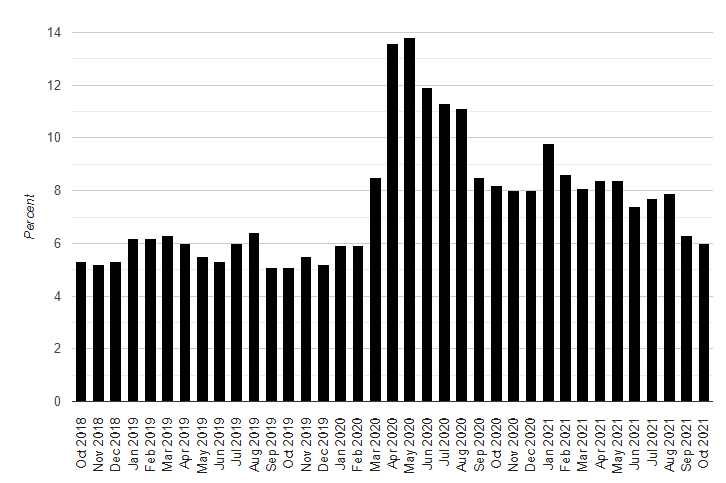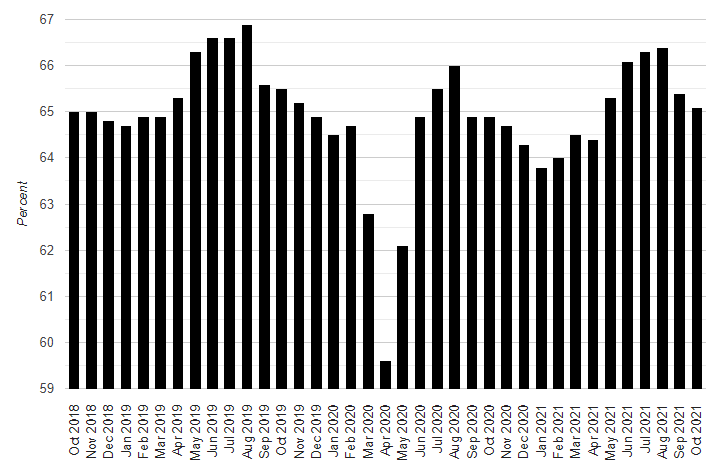
Canada’s unemployment fell and things sound a lot better, but it might not be what it seems. Statistics Canada (Stat Can) data shows the unadjusted unemployment rate fell in October. A deeper dive shows a drop in full-time employment was made up by a rise in part-time employment. Also, the drop in unemployed people? It was nearly the size of the number of people who dropped out of the workforce.
Canada’s Unemployment Rate Fell To 6% Last Month
The Canadian unemployment rate fell to pre-pandemic levels showing recovery is near. It might not look (or feel) the same as it was before the pandemic though. The unemployment rate fell to 6.0% in October, down from 6.3% the previous month. It was the lowest rate since February 2020, the last full month before the pandemic was declared.
Canadian Unemployment Rate
The monthly rate of unemployment in Canada.

Source: Statistics Canada; Better Dwelling.
The actual number of unemployed Canadians fell by tens of thousands of people. Stat Can estimates 1.23 million unemployed people in October, down 68,100 from a month before. Let’s take a dive into the other side of the equation.
Part-Time Employment Is Rising But Full-Time Jobs Are Falling
Canadian employment increased but most of the increase was part-time employment. There were 19.22 million employed in October, up 9,700 people from a month before. Breaking it down, 15.60 million of the jobs were full-time, down 51,200 from a month before. The remaining 3.63 million jobs were part-time, an increase of 61,000. Fewer full-time gigs are being obscured by a rise in part-time employment. Not exactly the same thing.
The Size Of Canada’s Workforce Contracted In October
It might sound odd to see the unemployment rate fall with those numbers. The number of unemployed people dropped by a much larger number than jobs increased. This is due to the participation rate, which is the share of the population employed or looking for work. When this rate falls, a greater share of people are no longer looking for work.
Canadian Participation Rate
The share of the population employed or looking for work.

Source: Statistics Canada; Better Dwelling.
Canada’s participation rate reversed some of the gains made during the pandemic. The rate fell to 65.1% in October, down from 65.4% reported in the previous month. Some of this is due to retirement, but not all of it. The participation rate for the working-age population fell to 79.3% in October, down from 79.6 a month before. It’s not just retirees but fewer working-age adults are seeking employment.
Retraining, sabbatical, or just giving up on employment? That needs to be the subject of a more in-depth analysis later. What we can see is these numbers are more complicated than the headline data implies. Part-time work is displacing full-time work and fewer working-age adults are seeking employment. It’s not the picture most takeaway when they hear, “the rate of unemployment fell!”
Source: betterdwelling.com
Posted by Teri-Lynn Jones on
Leave A Comment